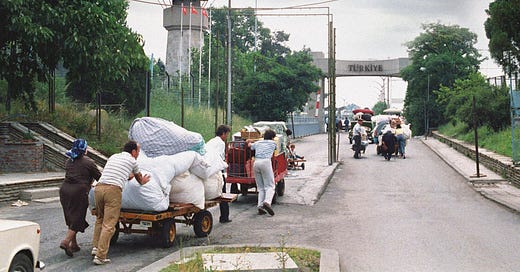Europe's Forgotten Ethnic Cleansing
In 1989, Bulgaria ethnically cleansed 360,000 Turks and Muslims following a violent assimilation campaign supported by the country's top intellectuals. Almost no one ever talks about it.
No one cares about Bulgaria. The country of 6.4 million is about the same size as the state of Ohio, but it mostly gets ignored in favor of its headline-grabbing neighbors. It is mostly known as the EU’s great underachiever, and the country currently fills out the bottom rankings of most major EU indicators. It has the lowest purchasing power in the EU, the lowest GDP per capita in the EU, the lowest minimum wage in the EU, and the lowest life expectancy in the EU. But because it’s in NATO, and because it mostly stays out of trouble (save for when it’s blocking the EU aspirations of neighbors, as is currently the case with Macedonia), few care. Due in part to the tendency of the world to forget Bulgaria, one of the largest ethnic cleansing operations in modern European history – perpetrated by the Bulgarian government against some 360,000 Turks and Muslims, who were driven into Turkey in 1989 – has also been forgotten. But it is not just a matter of forgetting. It hardly registered while it happened. The so-called “Big Excursion” – the Bulgarian euphemism for the ethnic cleansing – rarely appeared on the covers of national or international newspapers outside of Turkey as it was carried out between May and August 1989. There was one significant exception, where the ethnic cleansing was treated as front page news: neighboring Yugoslavia. Some historians, such as Tomasz Kamusella, have suggested that Bulgaria’s campaign against its Turkish population, along with the world’s indifference to it, is what gave nationalists in Yugoslavia their ideas and the confidence to carry them out.
Keep reading with a 7-day free trial
Subscribe to Lily Lynch to keep reading this post and get 7 days of free access to the full post archives.



